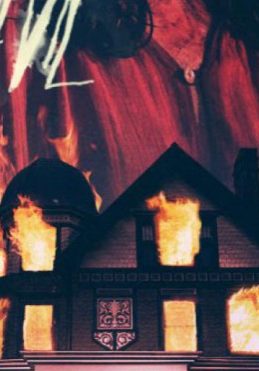Whispers of Dread: “The House of the Devil”
“Pizza? I hear you guys like pizza.” Whispered amidst the unnerving calm, this line from Ti West’s “The House of the Novil,” sums up the film’s eerie juxtaposition of the mundane and the macabre. Released in 2009, the director harkens back to the horror filmmaking of the 1980s, not just in the film’s setting, but in its cinematic DNA. We are offered what appears to be a simple setup – a cash-strapped college student, Samantha, played with authentic understatement by Jocelin Donahue, takes a seemingly quiet job babysitting in a remote mansion. Yet, from the outset, audiences will feel the visceral sense of dread that masterfully builds to a crescendo of terror.
Bringing Shadows to Life
The atmosphere and tone of “The House of the Devil” are a throwback that work exceptionally well to envelope the viewer in its world. West’s approach to horror is grounded in suspense and a pervasive sense of foreboding. The film does not rely heavily on shocking visuals or gore to unnerve its audience; instead, it subtly layers tension with long, quiet takes and an unnervingly static camera that capture the isolation and vulnerability of the central character.
The cinematography is meticulous with its deliberate choice of lighting, filter, and camera angles that pay homage to its 1980s antecedents. The effective use of shadow and light paint scenes that feel like they could be stills from that era’s genre classics. There are no special effects spectacles here; the film revels in its restraint, knowing that sometimes, what you don’t see is far more frightening than what you can.
The soundtrack and sound design bolster the ambiance expertly, utilizing a score that is both nostalgic and foreboding, at times disappearing to leave the audience in an oppressive silence that amplifies the onscreen tension. Moments of diegetic sound, such as the tick of a clock or the creak of a floorboard, are profoundly effective in their simplicity.
The Dance of Dread and Disquiet
In similar vein, the performances are notably subdued—there’s no scenery-chewing here. Donahue embodies Samantha with a progression from wide-eyed innocence to sheer horror that is both natural and gripping. Supporting actors, including Tom Noonan and Mary Woronov, project a disquieting presence that is unsettling in their understatement.
“The House of the Devil” predominantly indulges in psychological horror. It is a film that derives fear from its absence of explicit horror elements for much of the runtime, making the viewer’s imagination the most potent tool in its arsenal. It splendidly fits its chosen subgenre, whilst also defying expectations set by the modern climate of high-octane horror—the film is slow-burning, and all the more impactful for it.
The methods used to frighten the audience lean heavily toward the psychological, punctuated by moments of sudden shock that, because of their scarcity, hit with all the force of a hammer to the chest. West’s understanding of pace allows these moments to erupt from a foundation of palpable tension.
Thematic depth is woven through the fabric of the suspense, with subtle nods to societal fears of its 1980s setting, from female vulnerability to satanic panic. Yet, the film avoids being heavy-handed, allowing viewers to draw their own connections and conclusions.
Behind the Creaking Door: Appeal and Quality
As a horror movie, “The House of the Devil” is a breath of ghostly air in an overcrowded market. Its retro aesthetic and commitment to tension over terror make it an intriguing watch. While it may not satisfy gore hounds looking for visceral thrills, it is a revivifying homage to the genre’s purer, psychological roots. Its execution is so on point that it feels like an unearthed artifact from another time, an authentic experience rather than a synthetic imitation.
The film will most appeal to those who appreciate a slow burn, atmospheric horror that prioritizes mood over mayhem. It serves as a must-watch for admirers of classic horror and a fascinating study for casual viewers interested in how tension can be masterfully wielded.
Comparatively, it shares more DNA with the likes of Roman Polanski’s “Rosemary’s Baby” and John Carpenter’s “Halloween” than with any contemporary jump-scare laden horror film. It’s a tribute to a bygone era that manages to feel both familiar and fresh.
In concluding, “The House of the Devil” stands as a testament to the power of atmosphere and serves as a reminder that patience in storytelling can yield terrifying rewards. Its strength lies in its ability to invoke dread through well-executed traditional techniques while avoiding the pitfalls of excess and cheap thrills. It might not be for everyone, but for those it resonates with, it lingers like the echo of a distant scream – unsettling, memorable, and masterfully crafted. Viewer discretion is advised for graphic content and intense scenes that could be triggers for some, but for those brave enough to step inside, “The House of the Devil” is a horror dwelling worth the visit.




